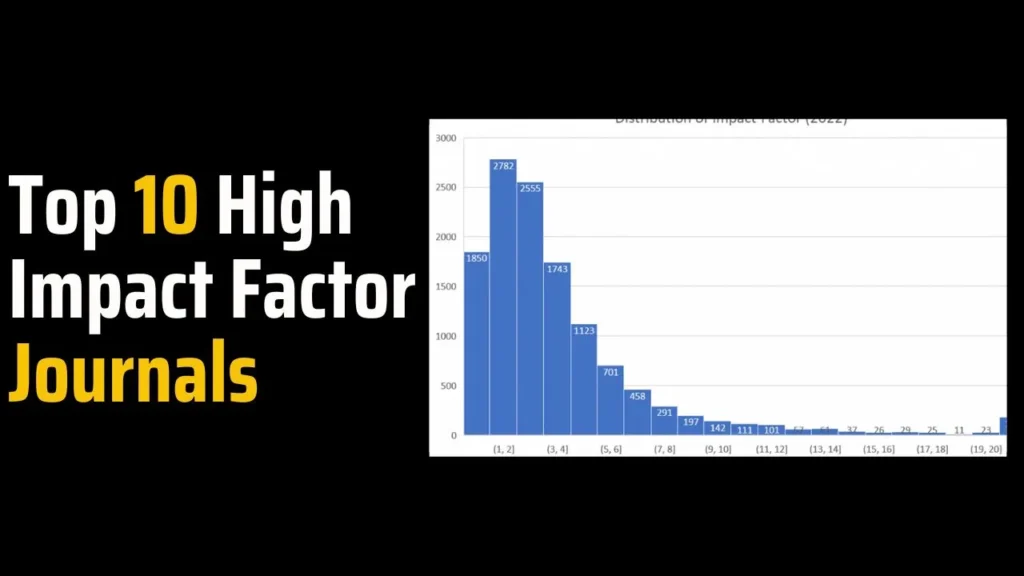In the competitive realm of academic publishing, where scholars face pressure to consistently publish or face professional consequences, the choice of journal for publication is paramount.
This decision not only impacts the exposure a manuscript gains but also plays a pivotal role in shaping academic careers, facilitating international collaborations, and potentially attracting funding opportunities.
How can I choose which journal is the best to publish in?
The Impact Factor is a crucial measure in evaluating a journal’s credibility and position within the academic community. It is calculated by dividing the number of citations that articles in the journal receive within a set timeframe, typically two years, by the total number of citable articles published by the journal during that same period.
To understand how to calculate the Impact Factor practically, let’s use an example. Suppose we have A, representing the citations obtained by articles published in 2021 and 2022, as documented by indexed journals in 2023. Let B denote the total number of articles published (citable) in 2021 and 2022. By applying the formula A/B, researchers can easily determine the Impact Factor for 2023.
This method enables researchers to assess the journal’s reputation, reliability, and influence within a specific academic field.
The Impact Factor: Why is it important?
Journals with a high Impact Factor are esteemed for their ability to attract attention not only from fellow researchers but also from institutions, policymakers, industry professionals, and the general public. The Impact Factor serves as a validation that a research study is significant and can contribute to enhancing a researcher’s credibility.
It acts as an endorsement, signaling to peers, employers, and funding agencies that the researcher’s academic work is of exceptional quality and deserves recognition.
However, gaining acceptance in journals with a high Impact Factor is not easy. These journals typically have strict criteria for evaluating manuscripts.
Submissions undergo a rigorous peer-review process that can be challenging and difficult.
Despite these obstacles, the advantages of publishing in high-impact-factor journals are considerable and should not be underestimated.
What makes an Impact Factor good?
When evaluating the top journals based on Impact Factor, researchers should also take into account other factors. In fields or subfields where high Impact Factor journals are prevalent, the expectation for what qualifies as a good Impact Factor tends to be higher.
Conversely, in fields with lower Impact Factor journals, the threshold for a good Impact Factor may be lower.
Therefore, it’s crucial to interpret Impact Factor data in a comparative context. The definition of a good Impact Factor is subjective and can vary based on individual or institutional viewpoints.
Selecting the Right Journal
Choosing the right journal significantly influences how your work is perceived and impacts the credibility of your research. It’s crucial to align your study with the journal’s focus and target audience, increasing the chances of acceptance.
Additionally, consider the journal’s status and reputation within your field and among your peers.
Simply looking at the Impact Factor isn’t sufficient; researchers should also assess factors like indexing, peer review status, open-access policies, and ethical standards.
These elements collectively indicate the journal’s credibility and influence within the scientific and academic community.
Top 10 journals with the highest Impact Factor
Many researchers find it challenging to search for and pinpoint the highest Impact Factor journals.
To simplify this process, here’s a carefully curated list of the top 10 highest-impact factor journals across various subjects:
| Rank | Journal Title | Impact Factor | Subject Areas |
| 1 | CA-A Cancer Journal for Clinicians | 254.7 | Oncology (Cancer Research) |
| 2 | Lancet | 168.9 | General Medicine |
| 3 | New England Journal of Medicine | 158.5 | General Medicine |
| 4 | JAMA- Journal of the American Medical Association | 120.7 | General Medicine |
| 5 | Nature Reviews Drug Discovery | 120.1 | Pharmacology, Drug Development |
| 6 | Nature Reviews Molecular Cell Biology | 112.7 | Cell Biology, Molecular Biology |
| 7 | BMJ-British Medical Journal | 105.7 | General Medicine |
| 8 | Nature Reviews Immunology | 100.3 | Immunology |
| 9 | World Psychiatry | 73.3 | Psychiatry |
| 10 | Lancet Psychiatry | 64.3 | Psychiatry |
While the provided list can offer guidance, researchers should take a nuanced approach when selecting high Impact Factor journals.
It’s essential to consider the other factors mentioned earlier to ensure that the chosen journal maximizes the impact and credibility of their research and contributions.



